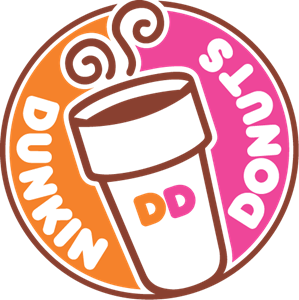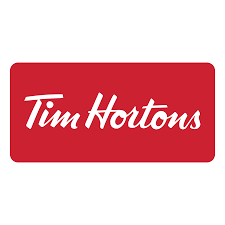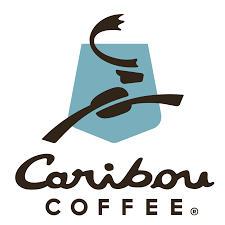Starbucks Franchise in 2025: Costs, Fee & FDD
Discover the costs, fees, and potential earnings of becoming a Starbucks licensee. Explore the brand’s history, support system, and market presence to make an informed investment decision. Learn about Starbucks’ strengths, challenges, and key competitors.
Table of Contents:
Starbucks, founded in 1971 by Jerry Baldwin, Zev Siegl, and Gordon Bowker in Seattle, Washington, has evolved into a global coffeehouse behemoth. Initially inspired by the Italian coffee culture, Howard Schultz, who joined the company in 1982, later acquired Starbucks and transformed it into the coffee-centric, customer-experience-focused brand we know today. Schultz’s vision and leadership played a pivotal role in Starbucks’ growth, making it an iconic symbol in the coffee industry. The brand’s significance lies not only in its extensive range of high-quality coffee products but also in its ability to create a unique, welcoming atmosphere that has redefined the coffeehouse experience.
Starbucks’ core offerings center around its expertly crafted coffee beverages, ranging from classic brewed coffee to espresso-based drinks like lattes and cappuccinos. Complementing these are their seasonal and specialty drinks, such as the popular Pumpkin Spice Latte and Frappuccinos. Besides coffee, Starbucks provides a variety of teas, pastries, and light bites, catering to diverse customer preferences. Their core market consists primarily of young professionals, students, and coffee aficionados who value quality and ambiance. Starbucks has also ventured into selling merchandise like coffee beans, mugs, and brewing equipment, enhancing the brand’s presence in customers’ daily lives.
Today, Starbucks boasts over 34,000 locations in 84 countries, serving millions of customers daily. The brand’s expansive footprint underscores its global appeal and ability to adapt to various markets. In the United States alone, Starbucks operates more than 15,000 stores, demonstrating its dominance in the American coffee landscape. On an average day, Starbucks caters to approximately 100 million customers worldwide, making it one of the most frequented coffeehouse chains globally. This extensive reach highlights Starbucks’ ability to maintain a consistent customer experience across diverse cultures and regions.
Starbucks does not technically franchise in the U.S., instead opting to offer a very limited number of licenses to specific operators in the U.S. Starbucks provides a robust support system for its licensees, ensuring they uphold the brand’s high standards. New licensees undergo comprehensive training programs covering everything from coffee preparation techniques to customer service excellence and store management. Starbucks also offers ongoing support through regional managers and a dedicated franchise support team, ensuring that licensees have access to the latest operational guidelines and marketing strategies. Additionally, Starbucks invests heavily in its digital platforms, offering tools for inventory management, customer engagement, and sales tracking. This comprehensive support system is designed to help licensees succeed and maintain the Starbucks experience that customers expect.
By understanding these key aspects of Starbucks, you can better evaluate the potential and fit of becoming a Starbucks licensee. The brand’s strong foundation, diverse product offerings, global presence, and extensive support system make it a compelling option for potential investors.
Starbucks Franchise Insights
- The brand’s loyalty program, Starbucks Rewards, has over 30 million active members in the U.S. alone, showcasing its effectiveness in driving repeat business and fostering customer loyalty.
- Starbucks sources its coffee beans from over 30 countries and is committed to ethical sourcing, with 99% of its coffee now verified as ethically sourced by third-party organizations like C.A.F.E. Practices.
- The Starbucks Reserve Roastery locations, found in select cities worldwide, offer a unique and immersive coffee experience, featuring rare and exotic coffees, artisanal food, and interactive coffee brewing techniques.
- Starbucks has a strong focus on sustainability, with initiatives like the Greener Stores framework aiming to operate 10,000 environmentally friendly stores globally by 2025, reducing carbon emissions, water usage, and waste.
- In response to the digital age, Starbucks has integrated mobile ordering and payment through its app, with nearly a quarter of all transactions in the U.S. coming from mobile orders, enhancing convenience for customers and efficiency for stores.
Starbucks Franchise Key indicators
Annual revenue
over $20bn
Total U.S. Units
over 15,000
Mobile order %
25% of all transactions
How much does it cost to open a Starbucks franchise?
Understanding the potential investment size and capital requirements is crucial when considering opening a Starbucks franchise. These financial commitments, including initial franchise fees, equipment costs, and ongoing operational expenses, impact the feasibility and profitability of the venture. Thoroughly evaluating these factors ensures that potential franchisees are prepared for the financial responsibilities and can make informed decisions about their ability to sustain and grow the business, ultimately contributing to long-term success.
Min & Max Investment
The total investment range for a Starbucks location in the U.S. is $760,000 to $2,275,000.
Below is an estimated investment breakdown for opening a Starbucks, structured similarly to an Item 7 table found in Franchise Disclosure Documents (FDDs). Please note that these are hypothetical estimates, as Starbucks does not franchise in the U.S. and thus does not provide an FDD:
Generated by wpDataTables
Type of Expenditure Minimum Investment Maximum Investment
License Fee (estimate)
$315,000
$315,000
Real Estate & Leasehold Improvements
$200,000
$1,200,000
Furniture, Fixtures, & Equipment
$100,000
$400,000
Initial Inventory
$20,000
$40,000
Signage
$10,000
$25,000
Training Expenses
$20,000
$30,000
Point-of-Sale System
$10,000
$20,000
Licenses and Permits
$5,000
$15,000
Insurance
$5,000
$15,000
Initial Marketing
$10,000
$20,000
Miscellaneous Opening Costs
$5,000
$15,000
Working Capital (3 months)
$50,000
$150,000
Additional Funds
$10,000
$30,000
Total
$760,000
$2,275,000
This table provides a rough estimate of the various costs associated with opening a Starbucks, assuming you are able to obtain a license. Keep in mind that actual costs can vary significantly based on location, store size, and other factors.
Required Capital
For opening a Starbucks location, we can estimate that the required financial criteria typically include:
- Required Capital Based on the total estimated investment, prospective licensees or franchisees should be prepared to have access to capital ranging from $485,000 to $2,050,000. Based on similar concepts Starbucks would likely want to see a licensee inject at least $500,000 of their own capital into a Starbucks location. This ensures they can cover the initial investment and any potential unforeseen costs.
- Liquid Assets It is generally recommended that prospective licensees have at least $500,000 in liquid assets. This amount ensures that the licensee can cover initial expenses and have a buffer for operational costs until the business becomes profitable.
- Net Worth Prospective licensees are often required to have a minimum net worth of roughly $1,000,000. This demonstrates financial stability and the ability to support the business during its initial stages.
These estimates are based on industry standards for similar-sized franchises and reflect the financial stability required to ensure successful operation and growth of the business.
Also, it is important to note as Starbucks has very limited licensees in the U.S., they place a high premium on operational experience in the Food & Beverage industry when evaluating potential licensees.
How much does a Starbucks franchise owner make?
Calculating the salary of a Starbucks franchise owner involves analyzing gross sales to determine total revenue, assessing operational efficiency to understand profit margins, and accounting for franchisor fees and additional expenses such as rent, utilities, and payroll. Effective management of these factors can significantly impact the profitability and financial success of a Starbucks franchise owner. This comprehensive financial analysis helps estimate net profits, from which the owner’s salary can be derived. A clear understanding of these factors ensures accurate salary projections and financial planning for sustainable business operations.
Starbucks Revenue & Gross Sales
In 2024, Starbucks U.S. locations had estimated average gross sales of $1,350,000, reflecting a slight decrease from the previous year. While overall sales are strong, the decrease in sales does reflect an overall weakening in consumer spending in the U.S.
Which key factors impact the average revenue performance of Starbucks locations?
The decline in average gross sales revenue performance for Starbucks stores in the U.S. from 2023 to 2024 can be attributed to several factors. First, increased competition from both traditional coffee shops and new entrants in the specialty coffee market may have diverted some customer traffic. Second, economic conditions, such as rising inflation and interest rates, could have led to reduced consumer spending on discretionary items like premium coffee. Additionally, supply chain disruptions and increased costs for raw materials might have forced price adjustments that deterred customers. Lastly, shifting consumer preferences towards home-brewing and the convenience of ready-to-drink options available in grocery stores may have further impacted in-store sales. These factors, combined, likely contributed to the observed decline in revenue performance.
Starbucks Franchise Operational Costs
When opening a Starbucks licensed store, there are several key primary ongoing operational costs to consider:
- Labor Costs This includes wages, benefits, and training for baristas, shift supervisors, and store managers.
- Cost of Goods Sold (COGS) This encompasses the cost of coffee beans, milk, syrups, pastries, and other food and beverage items.
- Rent and Utilities Monthly rent for the store location, along with utilities such as electricity, water, gas, and internet.
- Marketing and Advertising Ongoing local marketing efforts and contributions to the national advertising fund.
- Maintenance and Repairs Regular maintenance of equipment, fixtures, and the store premises, as well as any necessary repairs.
- Supplies Consumable supplies like cups, napkins, straws, cleaning supplies, and office supplies.
- Insurance Coverage for property, liability, worker’s compensation, and other necessary insurances.
- Royalties and Licensing Fees Ongoing royalty payments to Starbucks, typically a percentage of gross sales.
- Technology and POS System Maintenance and updates for the point-of-sale system, software subscriptions, and other technological tools.
- Taxes Local, state, and federal taxes, including sales tax, payroll tax, and income tax.
- Waste Management Costs associated with waste removal and recycling services.
By carefully managing these operational costs, you can ensure the financial health and sustainability of your Starbucks licensed store.
Starbucks Franchise Fees
Operating a Starbucks license in the U.S. involves several ongoing operational fees. Here are the expected key fees:
- Royalty Fees Starbucks typically requires a royalty fee, which is usually a percentage of the store’s gross sales. This percentage can range from 6% to 8%.
- Marketing and Advertising Fees Licensees may be required to contribute to a national advertising fund, which can be around 2% of gross sales. Additionally, there might be local marketing obligations.
- Additional Fees There are additional fees for training programs, technology, and other items provided by Starbucks that may be applied
These ongoing fees are essential to consider when planning the financial aspects of owning and operating a Starbucks licensed store. These fees are crucial for maintaining the brand standards and operational efficiency of a Starbucks store.
Starbucks Franchise Earnings
The earnings of a Starbucks license owner can vary significantly based on a variety of factors including location, sales volume, operational efficiency, and cost management. However, on average, Starbucks license owners can earn a significant income.
Starbucks licensees have an estimated average gross sales of $1,350,000. Based off of the average gross sales, we can estimate a Starbucks licensee makes $200,000 in estimated earnings (EBITDA) per year, assuming that the licensee is an owner-operator in the location. This means that you can consider the salary of a Starbucks licensed store owner to be roughly $200,000 before interest, taxes, depreciation, and amortization (EBITDA).
If the licensee is semi-absentee, then earnings will be significantly lower based off of the costs of having a hired manager.
How to Open a Starbucks Franchise or Licensed Location
Becoming a Starbucks licensee in the U.S. involves a series of steps from initial inquiry to the start of business operations. Here’s a detailed overview of the process:
1. Initial Inquiry
a. Research and Interest: Begin by researching Starbucks’ licensing opportunities and determining if it aligns with your business goals and capabilities.
b. Contact Starbucks: Submit an inquiry through the Starbucks official website or contact their business development team to express your interest in becoming a licensee.
2. Application Submission
a. Complete Application: Fill out the formal application provided by Starbucks, including details about your business background, financial capability, and proposed location.
b. Financial Review: Prepare to provide financial statements and proof of capital, demonstrating your ability to meet Starbucks’ financial requirements.
3. Preliminary Evaluation
a. Initial Evaluation: Starbucks reviews your application and financials to ensure you meet their criteria. This includes an assessment of your business experience and financial stability.
b. Interview: If your application is shortlisted, you will be invited for an interview to discuss your qualifications and vision for the Starbucks location.
4. Approval and Agreement
a. Approval Notification: Upon successful evaluation and interview, Starbucks will notify you of your approval to become a licensee.
b. Franchise Agreement: Review and sign the franchise agreement, which outlines the terms and conditions, including fees, operational guidelines, and support provided by Starbucks.
5. Site Selection and Lease Negotiation
a. Site Selection: Work with Starbucks to identify a suitable location for your store. This involves market analysis and demographic studies to ensure the location meets Starbucks’ criteria.
b. Lease Negotiation: Negotiate the lease for the chosen location, ensuring it aligns with Starbucks’ requirements.
6. Store Design and Construction
a. Design Approval: Collaborate with Starbucks’ design team to create a store layout that adheres to their brand standards.
b. Construction: Hire contractors to build out the store according to the approved design, while maintaining regular communication with Starbucks to ensure compliance with their specifications.
7. Training and Staffing
a. Comprehensive Training: Attend Starbucks’ comprehensive training program, covering all aspects of store operations, customer service, and brand standards.
b. Staff Hiring and Training: Recruit staff and ensure they undergo the necessary training provided by Starbucks to maintain consistency and quality.
8. Pre-Opening Preparations
a. Initial Inventory and Equipment: Order the initial inventory of coffee, merchandise, and supplies, as well as necessary equipment.
b. Marketing and Promotion: Plan and execute pre-opening marketing and promotional activities to generate buzz and attract customers.
9. Grand Opening and Ongoing Support
a. Soft Opening: Conduct a soft opening to test operations and make any necessary adjustments.
b. Grand Opening: Officially open the store to the public with a grand opening event.
c. Ongoing Support: Receive continuous support from Starbucks, including operational guidance, marketing assistance, and periodic evaluations to ensure adherence to brand standards.
By following these steps, you can navigate the process of becoming a Starbucks licensee and successfully start and operate your Starbucks location.
Pros & Cons
Pros:
Strong Brand Recognition: Starbucks is one of the most recognized and respected brands globally, which can attract a loyal customer base and drive consistent traffic to your store.
Proven Business Model: Starbucks has a well-established and successful business model, reducing the risk for new licensees and providing a clear roadmap for operations.
Comprehensive Training and Support: Starbucks offers extensive training programs and ongoing support, ensuring that licensees have the knowledge and resources needed to operate their stores effectively.
High-Quality Products: The brand is known for its high-quality coffee and beverages, which helps maintain customer satisfaction and repeat business.
Marketing and Advertising: Starbucks invests heavily in marketing and advertising at both the national and local levels, helping to promote your store and increase visibility.
Innovation and Adaptation: Starbucks continually innovates its product offerings and adapts to market trends, keeping the brand relevant and appealing to customers.
Cons:
High Initial Investment: The initial cost to open a Starbucks license can be substantial, which may be a barrier for some investors.
Ongoing Fees: Licensees must pay ongoing royalty fees (typically 6-8% of gross sales) and marketing fees (around 2% of gross sales), which can impact profitability.
Strict Operational Guidelines: Starbucks has stringent operational and brand standards that licensees must adhere to, which can limit flexibility and require significant oversight.
Competitive Market: The coffee industry is highly competitive, with numerous established brands and independent coffee shops vying for market share, which can affect your store’s performance.
Economic Sensitivity: Starbucks’ premium pricing can make it more sensitive to economic downturns, as customers may cut back on discretionary spending during tough economic times.
Dependence on Supply Chain: Any disruptions in the supply chain can impact the availability and cost of key products, affecting store operations and profitability.
By weighing these pros and cons, you can better assess whether investing in a Starbucks license aligns with your financial goals, risk tolerance, and business aspirations.




